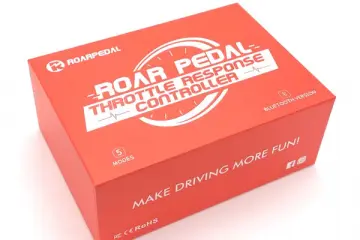Cybersecurity in the Age of IoT: Securing Your Smart Devices from Invisible Threats
Introduction: The Rise of IoT and Its Vulnerabilities
In the modern world, the Internet of Things (IoT) has transformed our lives, providing convenience and connectivity through smart devices. From smart thermostats that learn your preferences to security cameras that you can monitor from your smartphone, IoT devices enhance our daily routines in ways previously unimaginable. However, with this increase in connectivity comes a notable rise in cybersecurity threats. According to the latest reports, cyberattacks targeting IoT devices have surged by over 30% in the past year. As smart homes become increasingly common, so do the invisible threats lurking within our networks, making it essential for users to be proactive in their security measures.
Understanding the Threat Landscape
IoT devices often operate with minimal security measures, making them attractive targets for hackers. These vulnerabilities can stem from several factors such as weak passwords, lack of encryption, outdated firmware, and inadequate security protocols. Recent incidents, like the Mirai botnet attack, underscored the potential severity of IoT threats, compromising hundreds of thousands of devices and leading to large-scale disruptions. Additionally, many users remain unaware of the security risks associated with their devices, exposing them to cybercriminals who exploit this knowledge gap. Indeed, the latest industry research suggests that the average consumer has over ten IoT devices in their home—each serving as a potential entry point for cyberattacks.
Best Practices for Securing Your Smart Devices
To effectively combat these invisible threats, implementing robust security practices is crucial. Here are several recommendations for safeguarding your IoT landscape:
- Change Default Passwords: Most IoT devices come with default usernames and passwords that are easily guessed. Change these to strong, unique passwords immediately.
- Regular Updates and Patches: Ensure that your devices’ firmware is always up to date. Manufacturers frequently release updates to fix vulnerabilities, and failing to apply these updates can leave your devices susceptible to attacks.
- Network Segmentation: Create a separate network for your IoT devices, isolated from your main personal devices. This minimizes potential damage should an attack occur. Implementing a virtual LAN (VLAN) can be a practical solution for segmentation.
- Use a Firewall: Consider deploying a dedicated firewall or using a router with built-in security features. Firewalls can monitor and control incoming and outgoing traffic, thereby protecting your devices against unauthorized access.
Leveraging Advanced Technologies
As cyber threats become more sophisticated, the need for advanced security solutions has never been more pressing. Artificial Intelligence (AI) and Machine Learning (ML) technologies are emerging as powerful tools in the cybersecurity arsenal. AI-driven security software can analyze traffic patterns, detect anomalies, and respond to potential threats in real-time. Additionally, consider using IoT security services such as Armis or ForeScout, which offer comprehensive visibility and management solutions tailored to IoT environments. These technologies continuously monitor devices for unusual behavior, effectively neutralizing threats before they escalate into major breaches.
The Role of Consumer Awareness
While technology plays a critical role in securing IoT devices, consumer behavior is equally crucial. Education and awareness about cybersecurity must be prioritized to empower users to take decisive actions. Regularly educate yourself and your family about the importance of cybersecurity, focusing on potential threats and best practices to mitigate risks. Resources such as the Cybersecurity & Infrastructure Security Agency (CISA) and the National Institute of Standards and Technology (NIST) provide valuable information that can help users understand the importance of a proactive cybersecurity approach. Additionally, encourage discussions about personal IoT use and instill a culture of security as part of the everyday experience with technology.
Looking Ahead: The Future of IoT Security
As we move toward a more interconnected future, the demand for smarter security solutions will only intensify. Future advancements in blockchain technology, zero-trust architecture, and biometric authentication are likely to reshape how we secure IoT devices, making security more robust and user-friendly. It is essential for both manufacturers and consumers to prioritize security by design, incorporating protective measures from the ground up. Continuous collaboration between industry leaders, regulatory bodies, and consumers can help create a safer digital environment for all. Staying ahead of cyber threats will require vigilance, adaptability, and an unwavering commitment to cybersecurity best practices.
Discover more from Akiatech Solutions Blog
Subscribe to get the latest posts sent to your email.









